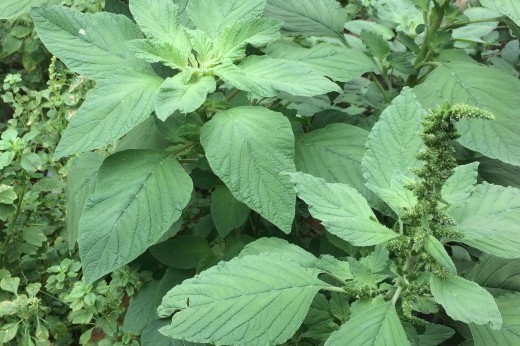Grove Street Farm, affectionately known as La Finquita (Little Farm), dominates the bustling intersection of Grove Street and Myrtle Avenue in Bushwick.
In a neighborhood that is home to one of Brooklyn’s largest immigrant populations yet also has the smallest amount of green space, this vibrant community garden serves as a green haven. La Finquita is managed by Make the Road New York (MRNY), a nonprofit with the mission to build power in working-class communities of color through grassroots organizing, paired with survival, legal, educational, and health services.
Once a trash-filled lot, the farm was born when MRNY members and neighbors came together over ten years ago to create La Arboleda de los Niños, or the Children’s Grove. Now, La Finquita produces a wide range of fruits and vegetables, many grown from seed brought from gardeners’ home countries—plants like pápalo, epazote, alaches, and habanero chiles from México, and gandules from Puerto Rico.
This little farm makes huge impacts. Whether they are immigrants from Latin America or the Caribbean or lifelong Bushwickians, gardeners here build community and share knowledge about growing food. Gardener Fidel Hernandez expressed his pride in the tiny farm: “For me it feels as if there were a million hectares of land.”
Produce and herbs raised here are shared by all farmers and volunteers and incorporated into MRNY’s weekly food pantry. Seasonal workshops and events encourage members to celebrate the fruits of their labors. English language learners, community health workers, and others use the garden for learning, celebrating, relaxing, and connecting with the earth.
Brooklyn Botanic Garden has been honored to partner with MRNY by providing teams of diverse Brooklyn Urban Gardner (BUG) volunteers, who have breathed new life into the farm by sharing their garden wisdom and running workshops—in English and Spanish—geared toward all ages. BUG teams have supported the farm’s annual Fall Festival, led activities like bulb and companion planting, helped establish the garden’s perennial and native plant beds to brighten its sidewalks, designed an arbor for vertical gardening, and created signage to educate and attract community members. One BUG team member, Wendy Aibel-Weiss, observed that “social justice is central to this garden. People join together and not only plant and nurture seeds—they plant and nurture ideas.”



